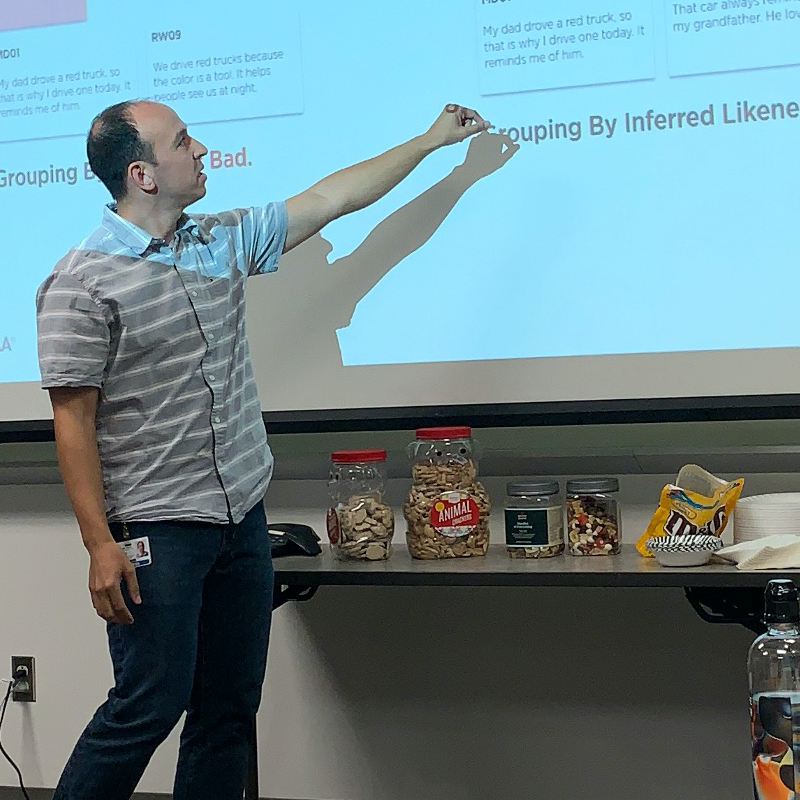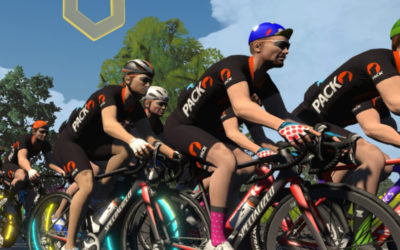I’d like to start with a bit of demystifying. Jumping in to program development might seem scary — it sure did to me when I began my journey in to formal Human-Centered Design program design and facilitation. What I came to realize, and what I’d like all my design peers to know, is how well our product design skillset transfers over to building large-scale programs.
- You start with a need and spend time understanding it from different perspectives
- Collaborative ideation and prioritization
- Testing prototypes and iterating
Don’t go it alone.
- Collaboration and validation are essential given the variety of people who may experience the programs you’re creating. There are simply too many perspectives and needs out there for a single person to consider.
- You’ll need a team as well for running the actual event. From timing support to tech troubleshooting, you’re going to need a hand when the participant numbers go in the double digits.
- As you get in to running multiple break-out rooms and more challenging activities with rigorous timing needs, you may even need a dedicated producer for the event to monitor each small group’s progress, overall timing, and to help make calls on how to flex the agenda.
- Don’t over-rely on the same crew every single session. People get tired. People’s interests change. Not to mention, there are many other people in your organization who likely want the opportunity to work with you and learn from leading large programs. Always be looking for new people to help out, and nurture those special relationships!
Engagement is a matter of caring.
- Especially in situations where people are told or suggested to attend versus joining on their own, you have to create interest and engagement by making the content or experience more intimate and relatable.
- If you want high participant engagement, your participants need to have a stake in the activity. Find a way to shift ownership from yourself (the facilitation) to the participant as the session goes on.
Programs start with a bang and fizzle out, unless…
- Early adopters bring a lot of optimism and enthusiasm. This is not typical of the participants you’ll likely have in later offerings. Don’t let early success and hype lead to complacency. This also highlights the need for continuous evaluation. In other programs I lead, we collect feedback either right as a session ends, or in a follow-up retrospective.
- Embrace early critics, as they speak for future barriers, and include a very diverse pool of participants so that you can glean a more accurate picture of your program’s strengths and opportunities.
- Just as with product design, you need to remain agile in your planning. Commit to an iterative approach of listening and keeping your curriculum fresh and appealing.
Visualization is greater than articulation.
- Especially in a remote environment, the needs to simplify concepts through intuitive and effective visuals is as essential as being able to describe them well. It may be worth spending a little more time adding visual polish to your materials as compared to when we did sessions in person.
- No matter how well you articulate a concept, everyone’s mental model is different. Visualizing a concept through a shared platform, such as Mural, allows you to facilitate the process of building a shared mental model to drive alignment.
Facilitating is like doing stand up.
- Most of your participants will show interest and appreciation for the material you’ve created. However, hecklers are everyone, and you’ll inevitably come across someone who challenges the material for unknown reasons.
- Unlike comedians though, you have a working relationship with your hecklers, so you have to employ relationship-build strategies in your communication style. This means having a way to frequently do pulse checks and be proactive about potential conflict. One tactic is to find interesting ways to include your nay-sayers and build on their unique perspectives.
- And as mentioned earlier, the more time you spend understanding the needs of your various participants, the more likely you’ll be prepared to provide rationale that resonates with most of of them.
- You’ll need to improvise at times. I’ve had people call in from an airport and needed help transcribing, people’s children (sometimes my own) jump on screen and you have to do a quick mute or bring in a co-facilitator to have your back, and materials or tech can break and you might be left copy and pasting slides from a Keynote or Power Point in to Mural or Miro board because you can’t screen share for some reason 🙂
- The key is getting ahead of all this in the ground rules, and making sure that your participant’s expectations are managed early. Tell your participants that we’re going to be easy on each other and accidents will happen. Model what it looks like to roll with the hiccups and stay positive.
Thank you!
These take-ways come as a result of my now five year journey growing my facilitation competency from a support role to program owner and lead facilitator of numerous offerings at USAA, a Fortune 100 financial services, member-focused company. Please reach out if you’d like to chat or have any questions or comments.



